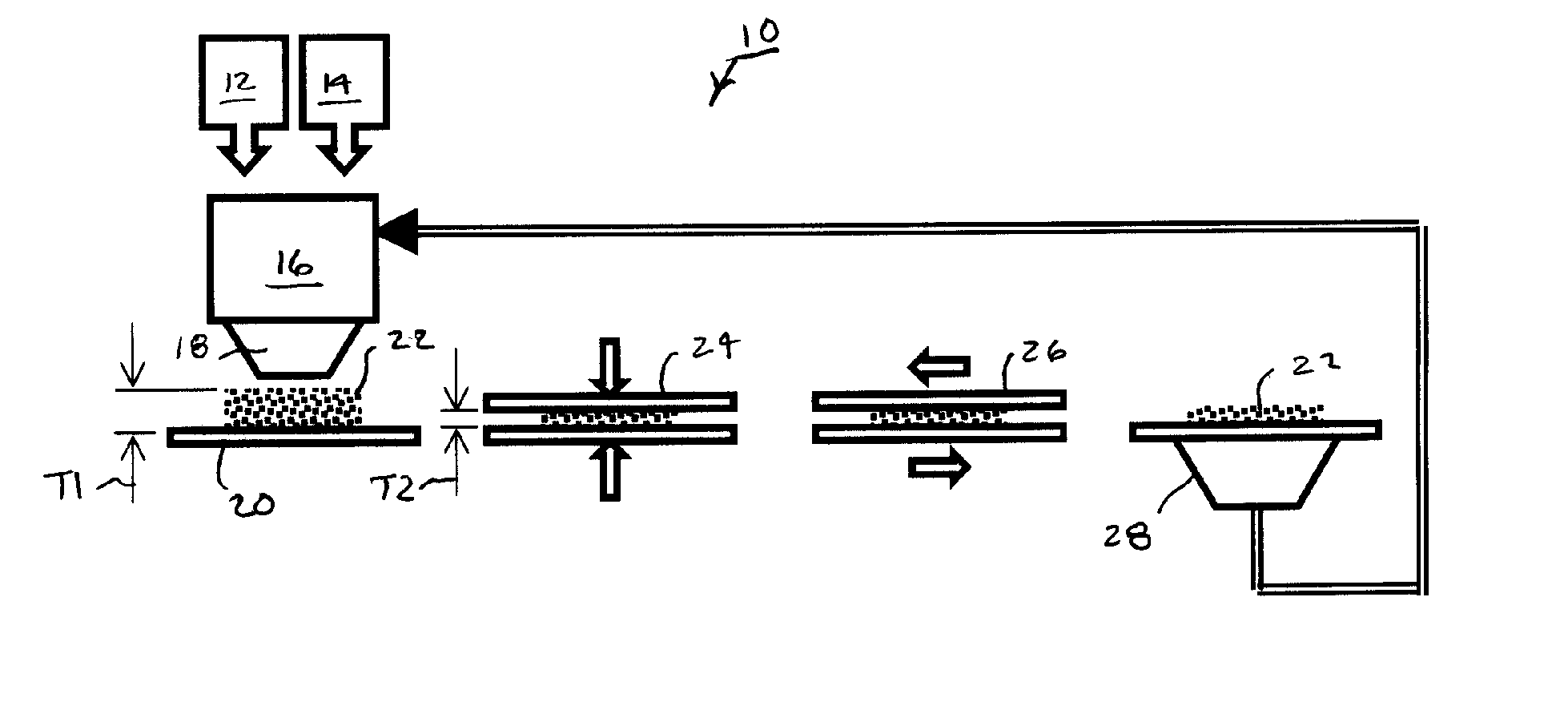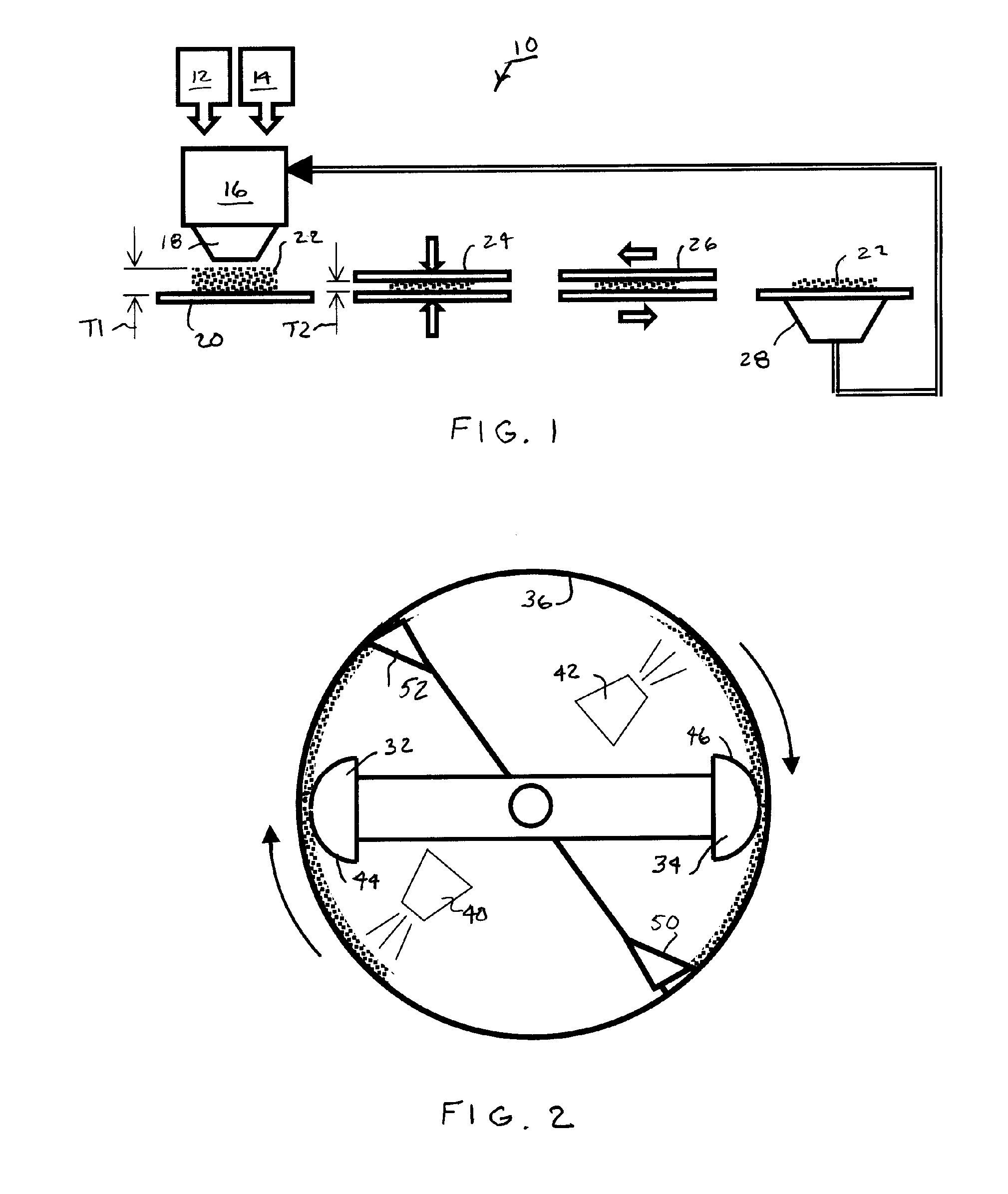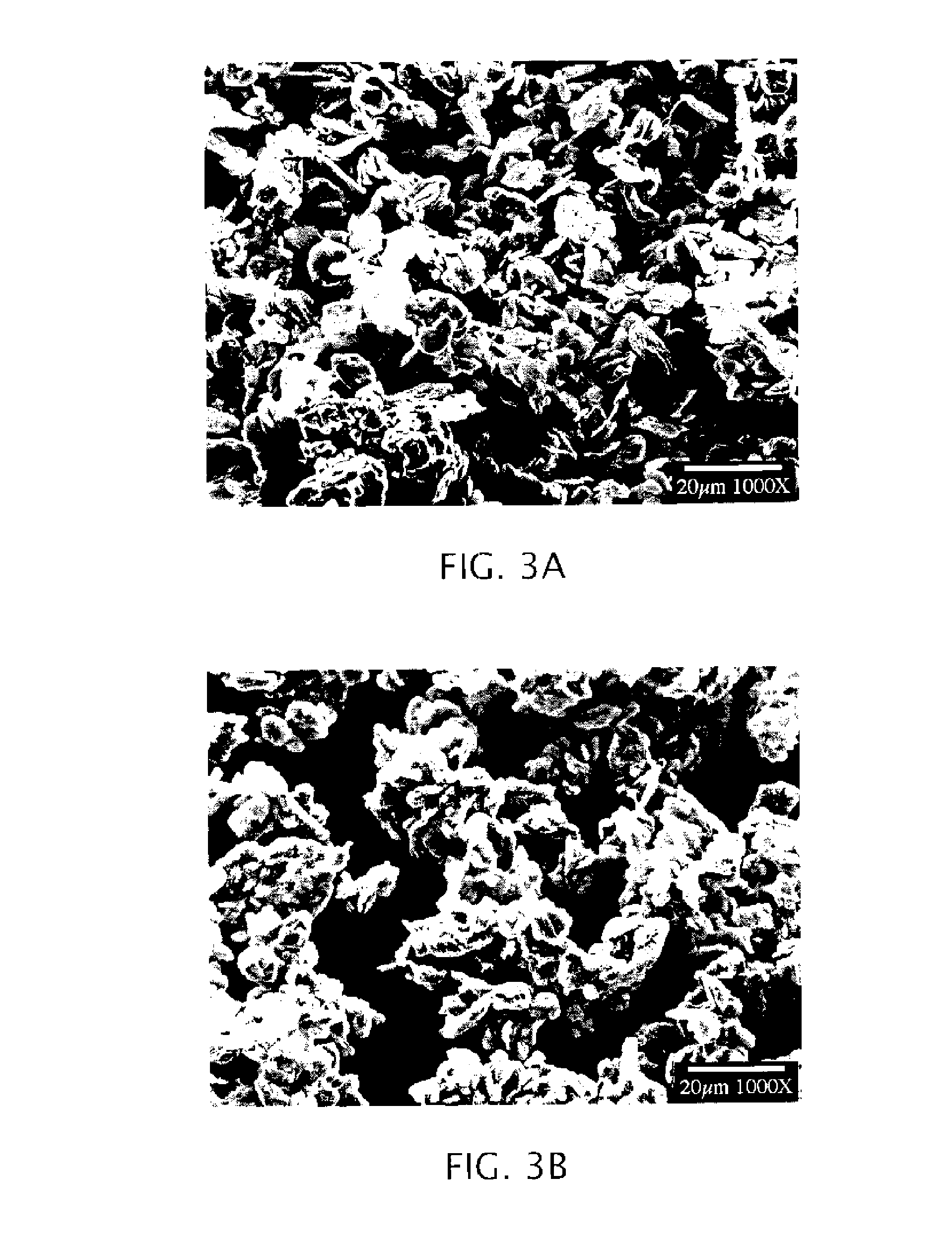Dry-Coated Oxygen-Scavenging Particles and Methods of Making Them
a technology of oxygen-scavenging particles and oxygen-scavenging particles, which is applied in the field of oxygen-scavenging particles, can solve the problems of reducing the initial amount of oxygen, reducing the amount of oxygen present, and often not providing sufficient low oxygen transmission rates to satisfy the manufacturers' expectations of product shelf li
- Summary
- Abstract
- Description
- Claims
- Application Information
AI Technical Summary
Benefits of technology
Problems solved by technology
Method used
Image
Examples
Embodiment Construction
[0037] The preferred oxygen-scavenging particles made in accordance with the invention have high oxygen-scavenging efficiency in presence of a protic solvent such as dissolved or liquid phase water in direct contact with the particles. The preferred particles preferably comprise oxidizable metals, particularly elemental iron or aluminum and their alloys, and at least one or preferably more activating components. The activating components initiate or otherwise promote the reaction of the oxidizable metals with oxygen.
[0038] In many instances, particle reactivity is preferably initiated by water contact. The associated activating components only promote the oxidation reaction in the presence of moisture, which can arise from direct contact with a liquid or absorption from surrounding air or vapor. Moisture arises from a packaged food product having sufficiently high water activity. For example, when the preferred oxygen-scavenging particles are loaded into container walls made from a...
PUM
| Property | Measurement | Unit |
|---|---|---|
| Fraction | aaaaa | aaaaa |
| Fraction | aaaaa | aaaaa |
| Fraction | aaaaa | aaaaa |
Abstract
Description
Claims
Application Information
 Login to View More
Login to View More - R&D
- Intellectual Property
- Life Sciences
- Materials
- Tech Scout
- Unparalleled Data Quality
- Higher Quality Content
- 60% Fewer Hallucinations
Browse by: Latest US Patents, China's latest patents, Technical Efficacy Thesaurus, Application Domain, Technology Topic, Popular Technical Reports.
© 2025 PatSnap. All rights reserved.Legal|Privacy policy|Modern Slavery Act Transparency Statement|Sitemap|About US| Contact US: help@patsnap.com



